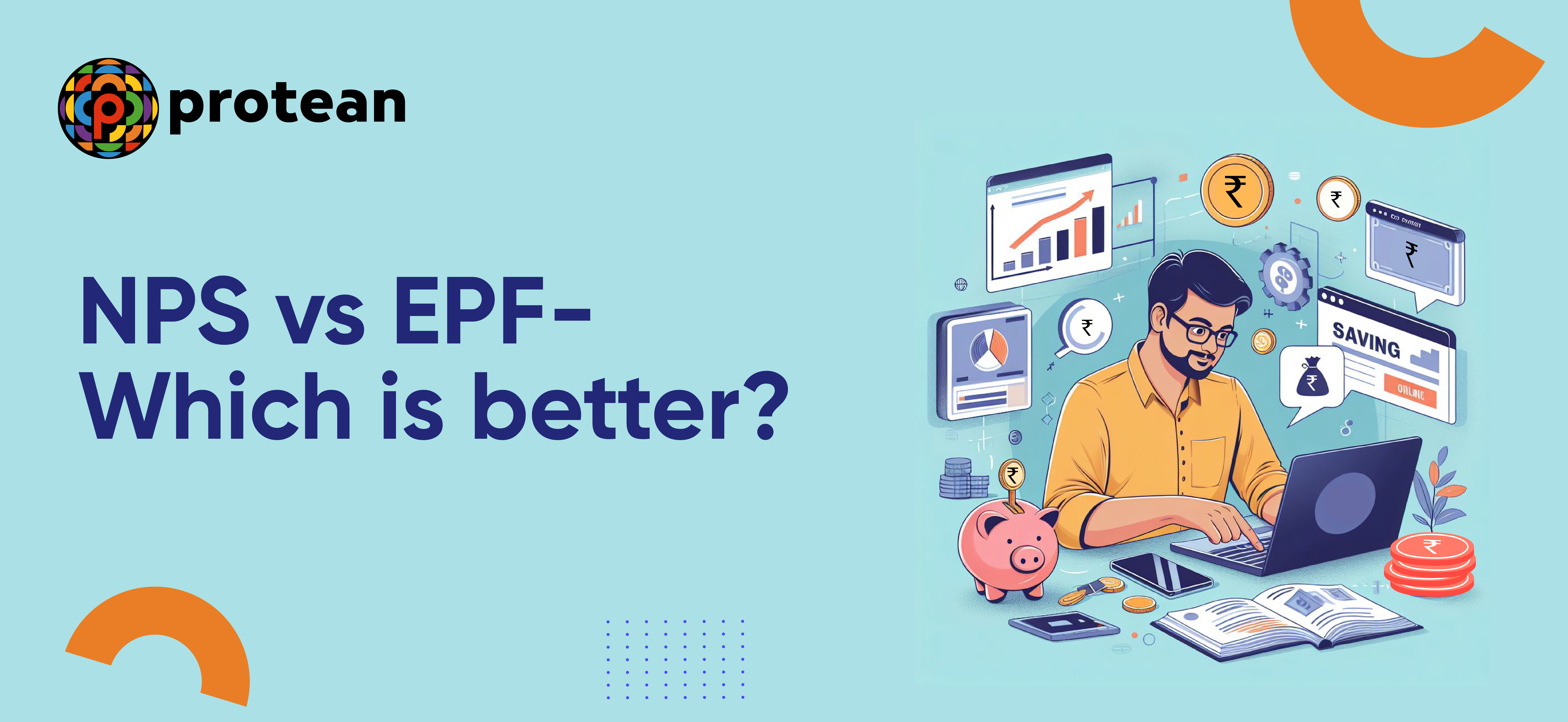Why Join NPS Instead of EPF?
If you are working as a professional in the corporate sector, you will want to have a comfortable and secure retirement. To achieve that, you need a steady income, like a pension. EPF has been providing a consistent return of around 8.5%, but if you want to secure a significant retirement corpus, you will need more than just EPF.
Deepak Mohanty, chairman, Pension Fund Regulatory and Development Authority (PFRDA), asserted the importance of having a pension account in one’s savings portfolio. It’s as important as having a balanced meal, he said. “Why should you have a pension as part of your savings portfolio? Because it is like an Indian thali, you need a little bit of everything. It should have a healthy mix of savings, equities, mutual funds, pension accounts, etc., to make it a wholesome meal. Pension should be on the menu of the saving portfolio,” Mohanty said.
According to a survey by a leading Retirement advisory firm, if you invest in just EPF, it can cover only 32% of your retirement corpus. When the superannuation benefits, it might go up to 50%. However, with NPS this figure can go up to 68%, meaning that you will meet a significant portion of your post-retirement fund requirements.
Moreover, another difference between NPS and EPF is that historically NPS has given about 2% more returns than EPF. This small difference can have a huge impact on building the corpus. Therefore, you should explore a combination of both for a more secure retirement plan.
How Does NPS Generate Higher Returns Than EPF?
The main difference between NPS and EPF in terms of return depends on their investment portfolio structure. EPF primarily invests in fixed-income securities, offering a steady return. However, NPS follows a different strategy, allowing subscribers to invest in a mix of equities, liquid funds, bonds, and government securities. This flexibility in the investment structure leads to higher returns, as equities tend to offer greater growth opportunities over time.
Additionally, it is essential to keep in mind that NPS investments are marked to market, and subscribers can adjust their investment options according to their preferences. With an average return of 9% to 11% since its inception, NPS offers flexibility and the potential for higher returns compared to EPF's fixed interest rate approach.
What is the NPS Corporate Sector Model?
In December 2011, the NPS Corporate Sector Model was introduced as a tailored version of NPS, designed to meet the specific needs of corporate organisations. It aims to cater to the unique requirements within the employee-employer relationship in various corporate settings.
The NPS Corporate Sector Model is an additional option for the retirement savings plan that is available to organised sectors. Also, it does not diminish the responsibilities of corporations under other schemes like the Provident Fund, etc. This model is quite popular in India. Nowadays, corporates are adopting this NPS scheme in India and proposing this as a benefit alongside EPF for their employees.
How Can an Employee Join NPS When They Already Have an EPF Scheme?
Companies make it mandatory for all employees to contribute to EPF, if they earn more than Rs. 15,000 per month. They might not want to switch all employees from EPF to NPS completely. However, many employees are open to investing in NPS after learning about its benefits. To facilitate National Pension System registration, there are various approaches companies can take for a seamless adoption. Here are some of them:
- New employees who are not covered by EPF can join NPS right from the start.
- Employees with previous EPF can choose NPS instead of EPF when joining a new company.
- Existing employees under EPF can continue with it while also joining NPS. The ultimate goal is to maximise retirement benefits for the hard-working employees. Companies can choose NPS, EPF, or both based on what employees prefer.
What are the Key Differences Between NPS and EPF?
The following are some crucial differences between NPS and EPF:
- NPS requires a minimum annual contribution of Rs. 1000 from employees, while EPF mandates a 12% salary contribution.
- Unlike EPF, where the Central Board of Trustees of the Employees' Provident Fund Organization sets a fixed interest rate, NPS offers market-linked returns.
- NPS allocates the cumulated investment in a diverse range of assets including government bonds, corporate debt, and equities. Whereas, EPF primarily focuses on debt investments with a limited cap on equity allocation.
- EPF contributions and interest qualify for income tax deduction up to Rs. 1.5 lakh under Section 80C. Whereas, NPS offers deductions up to Rs. 1.5 lakh under Section 80C and an additional Rs. 50,000 under Section 80CCD (1B). Other than that, employees can withdraw an additional 10% from employer contributions under Section 80CC (2) with NPS.
What are the Benefits of NPS after Retirement in the Company?
NPS has several benefits. If you opt for NPS and your employer contributes to your NPS account, it will boost your retirement savings. Additionally, there is an exclusive tax benefit on the employer's NPS contributions covered under Section 80CCD(2).
For example, if your salary is Rs. 10 lakhs and your employer adopts NPS, they will typically contribute 10% of your basic salary to your NPS account annually. This employer contribution is not considered part of your taxable income under Section 80CCD(2), resulting in significant tax savings for you. Over time, these tax benefits along with the savings can help you accumulate a substantial amount, further enhancing your pension corpus.
| Manage your NPS account contributions and investments with ease - explore our comprehensive guide for online and offline options. |
- Story by Kakoli Laha

